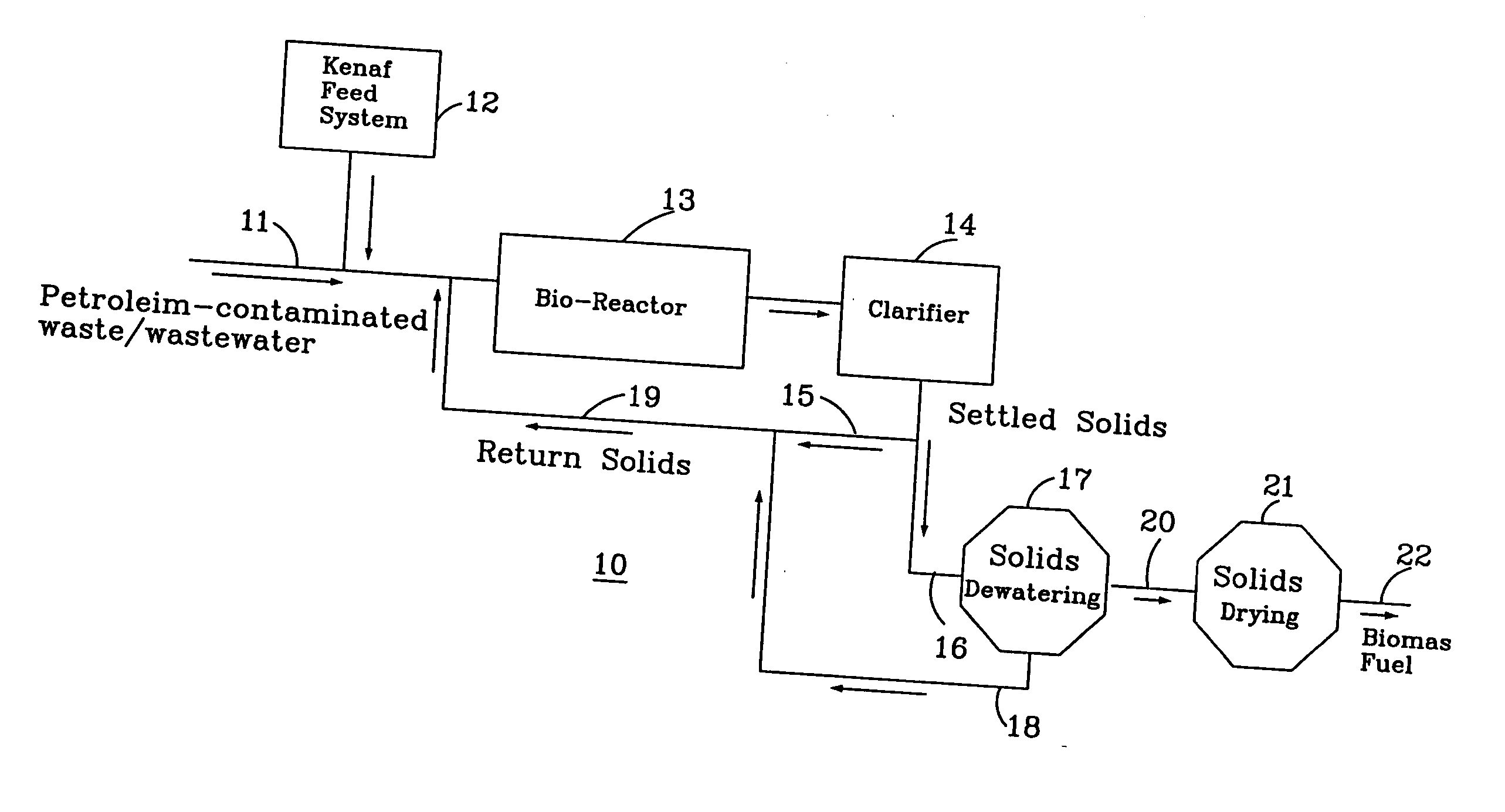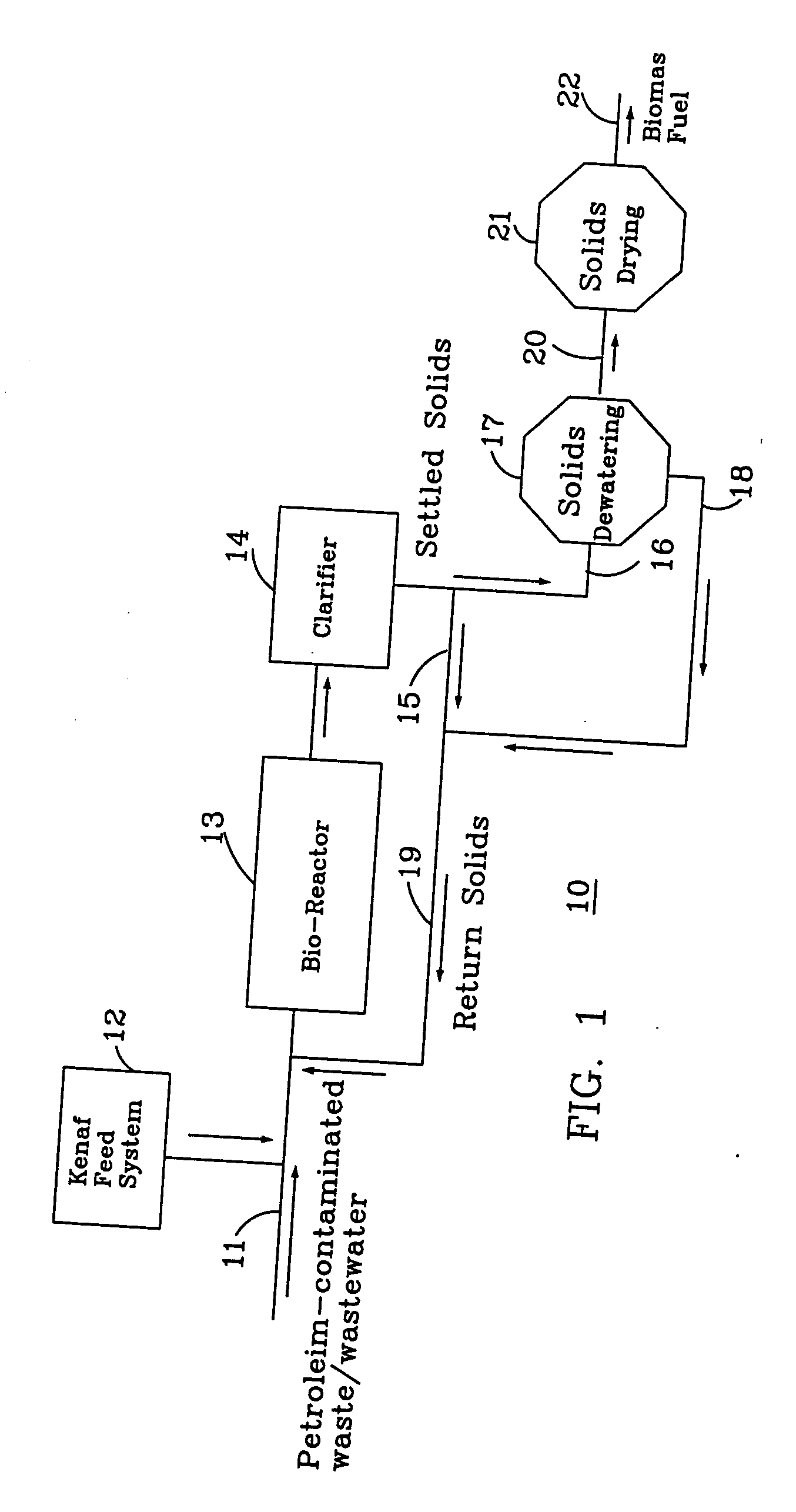Catalytic bioconversion of petroleum-contaminated wastes/wastewaters using kenaf core powder
a technology of kenaf core powder and bioconversion process, which is applied in biological water/sewage treatment, water/sludge/sewage treatment, chemical apparatus and processes, etc. it can solve the problems of high cost of dewatering, transportation and disposal of wastes, and in their original state cannot be directly used as fuels, etc., to achieve improved dewatering and drying speed, enhanced dewatering properties of waste activated sludge, and improved dewatering
- Summary
- Abstract
- Description
- Claims
- Application Information
AI Technical Summary
Benefits of technology
Problems solved by technology
Method used
Image
Examples
Embodiment Construction
[0015]FIG. 1 is a flow diagram of the process where kenaf powder 12 is introduced into the influent waste / wastewater stream 11 with an in-line injection system at a rate of 100 to 5,000 mg / liter. The flow rate of the untreated waste / wastewater stream is generally in the range of 5 to 500 gallons per minute. The kenaf powder that is combined with the waste / wastewater stream, and because of its highly absorptive characteristics, will immediately “grab” a portion of the organic load. The waste / wastewater stream and kenaf combine and flow into a bio-reactor where microbes and other elements break down the organics. The treated liquid is sent to a clarifier 14 where solids are separated from the liquid. Solids 16 are pumped to a bio-solid dewatering station while a part (19) of the solids (10% to 50%) may be returned to the bio-reactor 13 for further processing. The solids in the bio-solid dewatering station 17 are de-watered, with the water being returned 18 to the bio-reactor, and the ...
PUM
| Property | Measurement | Unit |
|---|---|---|
| pH | aaaaa | aaaaa |
| heat | aaaaa | aaaaa |
| hydrophilic | aaaaa | aaaaa |
Abstract
Description
Claims
Application Information
 Login to View More
Login to View More - R&D
- Intellectual Property
- Life Sciences
- Materials
- Tech Scout
- Unparalleled Data Quality
- Higher Quality Content
- 60% Fewer Hallucinations
Browse by: Latest US Patents, China's latest patents, Technical Efficacy Thesaurus, Application Domain, Technology Topic, Popular Technical Reports.
© 2025 PatSnap. All rights reserved.Legal|Privacy policy|Modern Slavery Act Transparency Statement|Sitemap|About US| Contact US: help@patsnap.com


